Have you ever wondered what it takes to start a custom skincare line? It’s an endeavor more and more people seem to be taking on these days, but it’s not for the faint of heart. With so much interest from people who want to get into the skincare business, I thought I’d share some behind-the-scenes information about what’s involved.
Ideation
The first step of starting any business is ideation. Before you even get into brainstorming product formulations, you have to be clear about your brand’s goals, values, philosophy, target customer, and mission statement. This is especially true in the skincare market, where it seems a new brand emerges weekly (including so many celebrity lines!). In order to be successful, you have to think about what makes you unique and how you’re going to set yourself apart from other companies.
For me, it was my 9 Skin Types, which I developed based on my personal experiences as an esthetician. After working closely with people to solve their skin concerns, I saw a gap in the market and felt passionate about creating results-driven products that catered to more than just dry, normal, or oily skin (this was standard at the time). I’m proud to say my skincare business turned 25 this year, you can learn more about my business journey here!
Once you feel confident in your brand identity, this is where the fun part begins—new product development. This has always been one of the best parts of my job, and even after all of these years, I still love it and it’s where I spend most of my time.
Questions to Answer Before Developing a Product
Once again, you’ll want to start by answering some basic questions.
1. What problem is this product trying to solve?
(In other words, what would make people want to buy this?)
2. What claims will this product make?
You’ll always want to promote features and benefits but t’s important to know that there’s something called the Fair Packaging & Labelling Act, which requires you to substantiate any efficacy claims you print on a product’s packaging. Bottom line: there are limitations to what you can say to market skincare products. They are considered “cosmetics” by the FDA so you can’t use any medical terminology.
3. Is this tapping into a trend?
This one is important to me because I’m passionate about providing solutions, not gimmicks. Thinking about trends helps you determine if your products will have longevity. I have seen so many new “it” ingredients come in hot and then never to be heard of again so you really need to research what might have staying power.
4. Will this have any qualities to be a “hero product”?
Everyone wants to develop a product that hits it out of the park. To do so, (in my experience), a hero product should be visually appealing, have a nice scent to make the experience pleasant, is problem-solving, can multi task and can be used by many skin types.
You’ll also want to do competitive research and analysis. Are there other products that fulfill a similar purpose, and if so, can you do it better? Can you offer people something else in terms of formulation, ingredients, format, or delivery?
Startup Costs
Before you move on to finding someone who can make your product for you, think about finances. Starting a business requires a big investment upfront, and you need to make sure you’re ready for it.
To start your custom skincare line, start-up costs will be in three primary areas:
- Product Development – Usually minimum of $5,000 for a single product
- Business Expenses – varies, but at least $2,000
- Marketing & Sales – starting at $500 and up
Check out this article for a more detailed dive into the startup costs for a cosmetic business.
Getting Your Product Made
So how long does it take to create a skincare product? Once you’ve got your concept locked down, expect it to take at least a year and a half before that product is ready to bring to market. This is about how long it takes to do everything right IF all goes according to plan, which we all know isn’t always the case.
Creating the Formula
Once you’re confident in your idea for a product and want to start the process of bringing it to market, the next step is to find a formulator (cosmetic chemist). Think of creating a product a bit like creating a recipe. As a visionary, it’s your job to come up with the idea for what you want—the type of food, how you want it prepared, what it should taste like, and which main ingredients should be used. After this, you take your idea to a professional who can help you put it all together and create a detailed recipe. They can tell you how to source your ingredients, how much of each should be used, how long to “cook” everything, etc. This is the role of a cosmetic chemist or formulator. They turn your vision into a recipe that you can bring to a manufacturer to have your product made.
Finding a good formulator to carry out your vision is so important, and it definitely helps if you understand the process a little. For me, I have done continuing education in this field such as taking several cosmetic chemistry classes at UCLA. This doesn’t replace having a chemist, but it has allowed me to be part of product development in a more meaningful way. I also like to stay up to date on the latest by regularly ttending trade shows, a great place to learn what’s new and meet others in the industry.
Finally, before your formula gets made, figure out who will own it. I cannot stress this enough! I’ve known many people who commissioned a formula thinking they owned the final product, only to discover the formulator actually did. There are both pros and cons to owning your own formula. The pros include having more control and getting transparency (you’ll know who the suppliers are and how everything in the formula is put together). Also, considering how unpredictable supply chains are these days, owning your formula means you have more power to control your destiny should something happen. The con is that intellectual property is quite expensive, so it’s a big investment upfront.
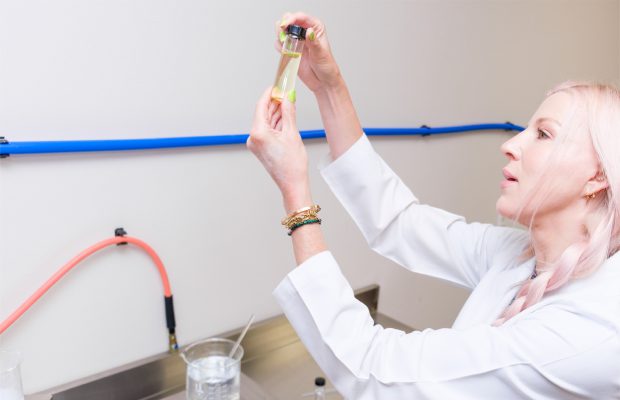
Finding a Manufacturer
Now that you’ve got your formula or “recipe,” you need to find someone to make it for you. Some companies are more of a one-stop-shop and offer both formulation and manufacturing services, but this won’t always be the case. Finding the right manufacturers to work with can make or break your business, so it’s important to thoroughly vet them before agreeing to anything.
It can be hard to know where to begin finding a manufacturer, but I personally really like these three directories: Independent Beauty Association (IBA), Happi Magazine Directory, and the Global Cosmetic Industry’s directory. There are plenty of other resources out there, but these are a good place to start.
Step 1: Interview & Research
All labs will have slightly different practices and requirements, so it’s important to interview them to make sure it’s a good fit. These are some of the questions I think it’s crucial to ask:
1. What other brands (or types of brands) have they worked with in the past?
Everyone likes to say they can make anything, but it’s good to figure out what they have the most experience manufacturing.
2. Do they follow Good Manufacturing Practices (GMP)?
This is a system for ensuring products are consistently produced and controlled according to quality standards. This is so, so important because as a brand owner, it’s ultimately up to you to ensure the product you’re creating is safe. One of the ways to do this is to partner with reputable manufacturers and make sure you’ve seen their facilities. You can also check FDA.gov to see if facilities have gotten any warning letters.
3. What’s their minimum order quantity (MOQ)?
As a brand just starting out, you really have to think about what kind of order volume you’re willing to commit to. In skincare, you’re ordering perishable goods that come with a shelf life. This means if you order more than you can turn around and sell within 6-18 months or so, that product becomes no good and you lose money. It’s the same cost for a manufacturer to set everything up to produce 500 units as it is to produce 20,000, so it’s in their best interest to have customers with large orders. This can be difficult when you’re first starting out, but thankfully many manufacturers are open to negotiation (as long as they have the physical capability of producing small batches). This is where a solid business plan is really important because they’re basically investing in you and banking on the fact that you’ll grow.
One word of caution I will offer is to be wary of companies that jump at the chance to produce very low order quantities. A company can’t make much money this way, so in my experience, it’s possible they could be skimping on GMP or in other areas. Of course, this isn’t always the case. Back when I started, it was really difficult to find a lab that would take a chance on a brand as small as mine—most of them worked with huge brands. However, indie brands are a lot more popular now than they were then, so there certainly are labs that will cater to this. Again, just be thorough and do your research!
There are also those who go very small batch and make products out of their kitchens, but I’m not a big fan of DIY skincare for the most part.
4. What’s a realistic lead time?
A lead time is how long it will take before your product is made and ready to go. Remember that if you’re ordering in smaller quantities, you may be a lower priority for a manufacturer. This isn’t personal, it’s just business. Their priority will be those who place big orders because that’s what keeps their lights on.
5. Who will be your point of contact?
The manufacturing process is rarely linear—there’s a lot that can come up and throw a wrench in things. It’s crucial that you have a reliable point of contact who will be able to answer your questions and walk you through everything. Ask who will be assigned to you before committing.
6. Will there be research and development fees?
It’s not uncommon for manufacturers to charge these, and they’re only one example of “hidden fees” you may encounter.
7. What is the financial health of your company?
This may seem like an awkward question to ask, but you’re entering into a business contract with someone so it’s important. Most manufacturers are willing to tell you, even if they don’t share specifics. If they withhold that information, it could be a red flag.
Finally, ask around. Word of mouth is important, and it never hurts to reach out about others’ experiences with a manufacturer.
Step 2: Testing
Product safety testing is part of GMP and can get expensive. Bigger manufacturers will often cover some basic safety testing, so be sure to ask what they’ll be covering versus what you need to take care of. Again, it’s your responsibility to ensure these tests are done so you can be confident that the product you’re selling to people is safe.
Learn more about the different types of required safety testing.
Step 3: Written Agreement
Once you feel comfortable moving forward with a manufacturer, get something in writing. It’s best to have a written contract, and you may want to have it looked over by a lawyer. This way, you’re protected should anything happen down the line.
Step 4: Contingency Plan
Always have a backup plan. This could mean working with more than one manufacturer, or knowing where you’d go should something happen with your current manufacturer. I already work with quite a few labs, simply because there are so many products in my line and they all have different specialties or capabilities. Even if this isn’t the case for you, it’s important to have a fallback.
True story: there was a very big lab in Dallas that had been in business for over 25 years and they manufactured three of our products. One day, they closed down without telling anyone. There were locks on the doors and the phone lines were disconnected! If I hadn’t had other labs to fall back on, it would have been really challenging.
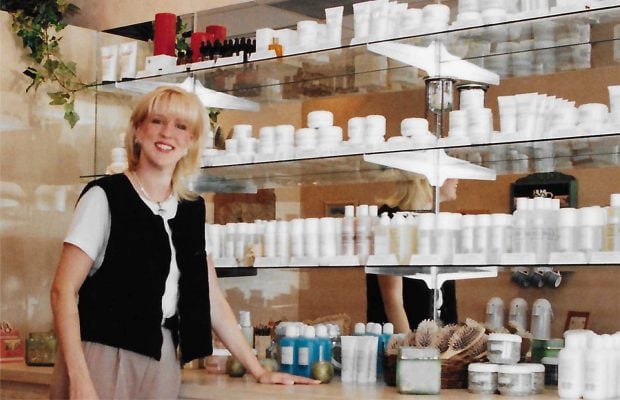
Packaging
As if finding a formulator and manufacturer wasn’t enough, you should simultaneously be interviewing packaging companies. You don’t want to end up with batches of product and nothing to put them in! Packaging companies all have different capabilities, so you have to find the one that fits your needs. For instance, do you have a product with ingredients that require airless packaging? How much customization are you looking for?
Minimum order quantity comes into play once again here, for custom packaging 10,000 units isn’t unusual. The nice thing about packaging is that it isn’t perishable like the product is. However, with the supply chain being as unpredictable as it is these days, you could end up waiting a good while before getting your custom packaging. Stock packaging exists, too, and is readily available. But you are at the mercy of whatever they happen to have.
Some of the manufacturing directories I listed earlier also have information on sourcing packaging, but another good one for this is the Beauty Packaging trade publication. I also attended the Luxe Pack show last month. (First trade show since the pandemic, yay!)
Turnkey Option
I know a lot of this sounds…overwhelming. It absolutely is! And what I’ve listed out here so far really only scratches the surface. For those who don’t want to go through the process of finding a formulator, manufacturer, and packaging, there is another option. It’s sometimes called “turnkey,” and refers to an agency that will take care of a lot of the steps for you. Basically, it’s a one-stop-shop where they formulate, manufacture, and also produce and print packaging.
Sounds great, right? The benefit of this is obvious, it saves you a lot of time and effort. There are also cons, though. That convenience comes with a fee, and it can be pretty expensive to hire an agency like this upfront. In addition, you lose a lot of the control and transparency you’d have if you maintained personal relationships with all your manufacturers. You’re at the mercy of using whichever suppliers and other partners the turnkey agency employs, so you’re not necessarily seeing as much of the process. I can completely understand why people choose to go with this option, but maintaining control and transparency over the production of my skincare line has always been super important to me. This is why I choose to go to the effort of working personally with labs.
What’s Next?
Even after you’ve finally gotten your dream product made, the work never ends! In fact, this is only the beginning. Here’s what comes next:
Storage
Where are you going to keep all your product? Is the environment suitable, meaning not too humid, hot, etc.? If you go the warehouse route, you may need to audit facilities.
Operations
Who’s going to fulfill your product and ship it out? Will there be an intermediary or third-party logistics? What are you going to ship your product in?
Marketing
Finally, how are you going to make sure your product reaches people? A good marketing and selling strategy is something you should have in place before you place a large order. As I mentioned before, skincare products have a shelf life, so you need to be able to turn them around quickly enough. I caution you not to get so caught up in the manufacturing process that you forget about marketing.
Also, don’t forget to communicate with your customers, listen to them, and take their feedback into account. Here’s another story for you. Have you heard of my best-selling Anti Bump Solution? It’s a spot treatment for cystic blemishes, but when I first started selling it we didn’t know it helped with that. It was just marketed for regular pustular-type acne, but we started hearing from people that it was working wonders on their hormonal breakouts. Thirty-plus years of this product, and I’m still not entirely sure why it works so well for cystic breakouts but I’m glad it does as it’s been such a miracle worker for thousands of people!
Insurance
If you haven’t already, you’ll want to get your business licensed as an LLC. This means you can transfer liability insurance to the company so that if something happens with one of your products, you aren’t personally liable. So many people think this won’t happen to them, but anyone can have a reaction to any ingredient. This is part of responsible business practices, and it’s always better to be safe than sorry.
Phew! So there you have it, the bare bones of what goes into starting a skincare line. Was there more or less involved than you expected? It’s really hard work that never stops, but if you can do it correctly and with a purpose, it’s such a rewarding experience.
Next, learn about skincare marketing terms and what they really mean.
*Starting any business or product line is a difficult process that requires a lot of time, energy, and work. The content of this blog is for informational purposes only, you should not construe or interpret any such information here or anywhere on our site as legal or financial advice.
Celebrity Esthetician & Skincare Expert
As an esthetician trained in cosmetic chemistry, Renée Rouleau has spent 35 years researching skin, educating her audience, and building an award-winning line of products. Her hands-on experience as an esthetician and trusted skin care expert has created a real-world solution — products that are formulated for nine different types of skin so your face will get exactly what it needs to look and feel its best. Trusted by celebrities, editors, bloggers, and skincare obsessives around the globe, her vast real-world knowledge and constant research are why Marie Claire calls her “the most passionate skin practitioner we know.”
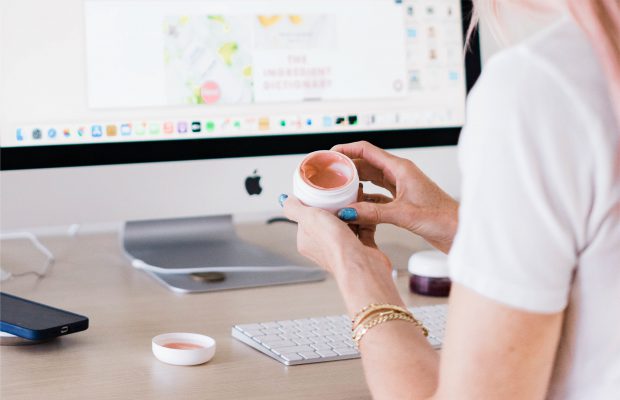
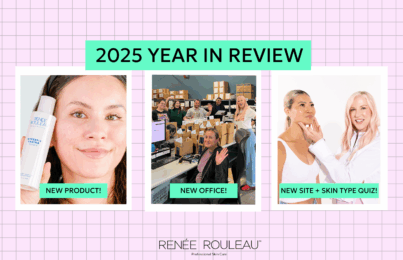
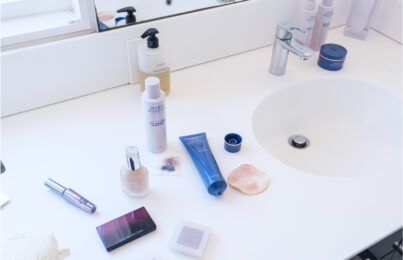
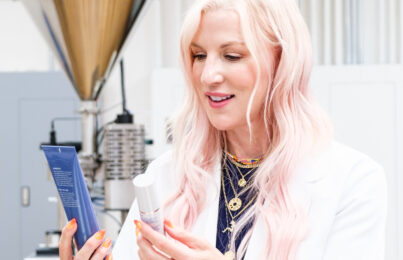
Comments:
I tried the mint renewal cleanser and it’s amazing! My skin looks glowing and healthy.thank you Renee.
Posted By: Christine Ricci |